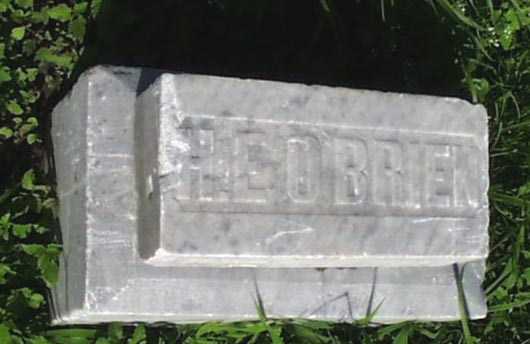H. E. O'Brien

Photo Credit: Rosa G. Gonzales
Speculation
It should first be noted that this burial site may provide the reason for the reading in one survey of the burial of a "Heabrie" as this could possibly be a misreading of "Heobrie(n)". The only source for "Heabrie" is the Fred Hay survey and may have been from an older stone that was difficult to read or from a handwritten source that could be misread.
What may be most pertinent to identifying this particular burial is the nearby stone marking the resting place of Mary Catherine Neal, wife of Arthur Henry Neal (son of the first mayor of Corpus Christi, Benjamin F. Neal). Mary Catherine and Arthur Henry Neal had a son Arthur (born 1878 according to family records) who married a "Gibe" O'Brien (again according to family records). Since H. E. O'Brien is buried next to Mary Catherine Neal, this may be a relative of younger Arthur's wife. The older Arthur and his son apparently spent much of their time in Galveston, possibly because of their love of the water. When they visited relatives in Corpus Christi in 1899 (see Caller 6-16-1899 page 4, col. 4) they came on their schooner, the Ofilia. While the two are listed as residing in Corpus Christi in 1880 (Nueces County census p. 1A) and in 1900 (Nueces County ED 130, page 1A line 42), they were often in Galveston during that period. In the 1910 census younger Arthur resides with his wife "Bertie A." and adopted son "Wm. M." in Galveston where he works as a longshoreman (Galveston County 1910 census E.D. 40, family 102 on 40th Street). At that point they say they have only been married for one year. Unfortunately there are only initials to indicate the first names so it is unclear if "H. E. O'Brien" is even a male or female. Moreover, as there are no dates, it is difficult to ascertain if this is an adult or a child. There are no probate records in Nueces County that fit this name so it is not even clear if they died in this area or were simply brought here for burial. It may be that there was originally more to the stone and that this is all that remains of the original marker.
Research and transcription: Michael A. Howell (18 October 2007)